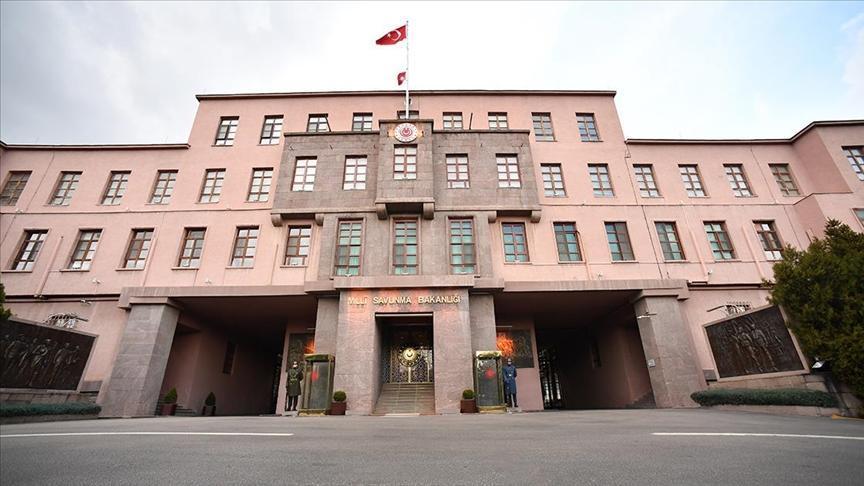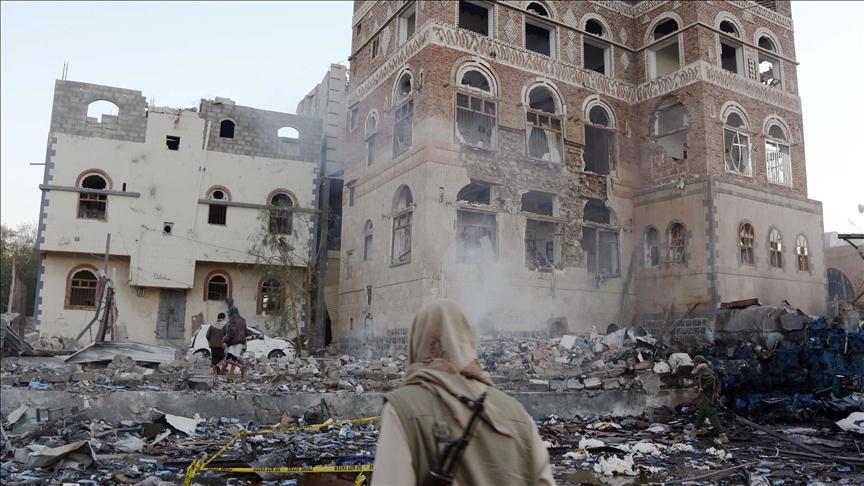The mysterious tracks of the Mediterranean
Melih Uslu

From Faralya in Fethiye to Antalya, the Lycian Way never fails to astound the traveler. Boasting some of Turkey’s most impressive scenery, the Lycian Way – a flagged trekking route that is the brainchild of English explorer Kate Clow –connects 23 cities from the Lycian civilization along southwest Anatolia’s Mediterranean coast.
Along the path that extends into Antalya via Patara, Kalkan, Kaş, Olympos and Tekirova, trekkers have their choice of spending the night in tents, village boarding houses or comfortable hotels. And even during the summer heat, the Lycian Way is cooled by the mountain breeze. If you’re up for taking the slower Lycian road to Antalya, let’s follow the flags together.
On the deserted peaks of the Taurus range
The cool waters of the Eşen River that flow from the Taurus Mountains to Kalkan point toward the Lycian Way. The three pearls of Lycia – Ksanthos, Letoon and Patara – decorate the delta where the river flows into the Mediterranean.
The music arriving from a distant shepherd’s flute and the rustlings of turtles are the sounds of isolation.
The first surprise of Kalkan is Patara beach, one of the longest in Turkey at 18 kilometers. On this beach where caretta carettas live, archaeologists have only recently excavated the ruins of the first-known lighthouse in history. Kaputaş, on the point where a narrow canyon in Kalkan opens up to the sea, is among the most beautiful beaches in Turkey.
Most of the Lycian Way’s ancient 18 cities between Kaş and Demre are in wild and inaccessible places. Kaş, which is the most important diving center in southern Turkey, is located on the edge of a mesmerizing peninsula that extends out into the Mediterranean. With its white-washed houses, narrow streets, clean beaches and elegant restaurants, cafes and bars, Kaş is like the new Bodrum of the Mediterranean.
Graves carved into the rocks on the eastern and western slopes of Kaş, the tomb at Uzunçarşı (Long Market), the ancient theater on the Çukurbağ peninsula and the pebble mosaic courtyard of Yeni Camii are all distinctive features of Lycia, which was dubbed the “country of light” by ancient sources. The track that extends from Kaş to the plateaus of the Taurus Mountains are among the most difficult and exciting sections of the Lycian Way.
The mountain path that follows the Kalkan-Bezirgân-Akçay route ends at Elmalı – but only after a hike of a few days through cloud-covered, forested hills.
Civilization by water
Featuring a path that winds its way 2,000 meters up passed the knife-edge peaks of the Taurus, Yörük villages that have never seen concrete, fields of mint and thyme, as well as waterfalls and mountain lakes, Kılıçlı village is the most exciting stopover point in the 20-kilometer coastal path that stretches from Kaş to Üçağız.
Kılıçlı, which overlooks Kekova Island, is located right in the middle of four Lycian cities: Theimeiussa, Aperlai, Isında and Kyaneai. The coast of Üçağız, which is a small fishermen’s village close to Kılıçlı, is ornamented with monks’ cells carved into giant rocks, one-man islands and Lycian tombs that remain in the middle of the sea, looking like treasure chests. The most intriguing corner of Üçağız, where pleasant fish restaurants line its marina, is Simena. The 2.5-hour path connecting Üçağız to Simena is a beautiful route that passes through carob woods.
Simena, which is the only village in western Turkey without an access road, offers an untouched view of the Mediterranean. Its citadel above the town is inherited from the Knights of Rhodes, while the coastline of Kekova Island, just across the water, is full of the remains from an ancient settlement known as the Sunken City.
Santa Claus’ house
Demre, the next major settlement after Üçağız, is the hometown of Saint Nicholas of later Santa Claus fame. The church in which Nicholas served as bishop in the third century is now a museum. The 1,000-year-old murals that decorate the walls of the church are the richest examples of the pictures detailing the life of the man who would later be known as Father Christmas. Every Dec. 6, the date the saint passed away in this church, a ceremony is held with thousands of participants from different countries.
Myra, another magnificent ancient city close to Demre, is striking thanks to its ancient theater that has remained almost undisturbed, as well as the graves carved into rocks right behind the theater.
Elsewhere, the Sura Acropolis, which rises on the top of a rocky hill at the end of the Demre Valley, was built as a center of prophecy. The Lycian Way, after Demre, extends to the eastern edge of the Teke Peninsula. The path continues along a combination of sea and mountains into Adrasan, 60 kilometers south of Antalya.
Adrasan, also known as Çavuşköy, is a touristic village a few kilometers inland from the coast, where the local bay features a sandy beach, several small hotels and some surrounding rocky hills. Following the path from the village toward the peninsula to the south, trekkers come to a lighthouse all on its lonesome.
Gelidonya, the lighthouse, is 227 meters above sea level and boasts an impressive panoramic view that includes five islands.
The arms of history
Olympos, situated eight kilometers north of Adrasan, is one of the holy establishments of Lycia. Built at the feet of the 2,366-meter-high Tahtalı Mountain, it is separated by a shallow river bed from a touristic Mediterranean village called Çıralı. Olympos is a real Mediterranean dream with its mysterious remains scattered throughout the trees, wooden huts situated in the trees, humble fish restaurants, a burning stone (Yanartaş) that has been burning for hundreds of years without going out, and pristine beaches that stretch for three kilometers.
Phaselis, 22 kilometers north of Olympos, is an extraordinary Lycian city that brings together three separate harbors. Eleven kilometers north of Phaselis, Kemer’s attractions include five-star holiday villages, a Dolphinarium and Ayışığı Park, which simulates a traditional Yörük way of living. As one approaches the Antalya city center from Kemer 42 kilometers away, touristic establishments abound.
But before going all the way to Antalya, the Manavgat-Side-Alanya route awaits you. Köprülü Canyon, with its 12-kilometer-long rafting course and natural beauties, the ancient theater of Aspendos, Konyaaltı beach, Antalya Archaeological Museum,
Perge and Saklıkent Skiing Center are all treasures in the district.
Indeed, there are myriads of treasures in the region. All they need is for you to decide it’s time to experience the illuminated Way of Lycia.
















